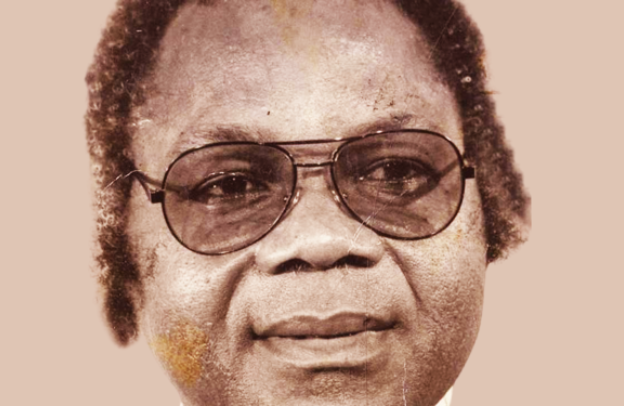James Mercer Langston Hughes, American Poet, and Social Activist – 1901 To 1967

James Mercer Langston Hughes (February 1, 1901 – May 22, 1967) was a multifaceted American talent, excelling as a poet, social activist, novelist, playwright, and columnist hailing from Joplin, Missouri. He was a pioneer in the world of jazz poetry. Hughes played a pivotal role as a prominent figure in the Harlem Renaissance.
Want to learn more about storytelling? Start by downloading the first chapter of The Storytelling Mastery for Businesses.
His renowned commentary on the era captured the essence of a time when the African American experience was prominently celebrated, a sentiment succinctly summarized as “the Negro was in vogue,” later echoed as “when Harlem was in vogue.”
From a young age, Hughes honed his writing skills, eventually becoming a multifaceted literary figure, excelling as a novelist, essayist, poet, playwright, short story writer, and commentator, among other roles. Among his popular prose series years after World War two were the “Simple” book series.
His insightful poems and books focusing on the experiences of Black individuals gained significant popularity during the 1920s, firmly establishing him as a respected and influential figure in the cultural and intellectual movement known as the Harlem Renaissance.
Through his diverse and impactful body of work, Hughes illuminated the struggles and triumphs of the Black community, leaving a legacy that continues to resonate with audiences around the world.
Check out our Life & Legacy Series to read more about similar stories.
Langston Hughes’s Early Life
James Mercer Langston Hughes by all accounts was born in 1901 in Joplin Missouri. His parents James Hughes and Carrie Langston who met when serving as a schoolteacher and an activist, had James and his brother John a few years after their holy matrimony, with James Hughes being the youngest.
James Hughes grew up in a series of Midwestern states during the peak of racism. A few years after James was born, his father divorced James’ mother and fled from Cuba to Mexico to avoid the increasing racial segregation that pillaged American society.
Right after his parent’s divorce, his mother Carrie in search of job opportunities migrated to Lincoln Illinois, leaving James in his grandmother’s care in Lawrence, Kansas.
Mary Patterson Langston who was just about seventy-one when James was born, took the boy in and relished him with the care he barely derived from his parents.
Through her experience as a Black activist, Mary injected James with stories about Black African Americans, stimulating his sense of racial pride and sentiment. That became Hughes’s background for pressing for the freedom of Blacks.
In the wake of James Hughes’s teen, his grandmother, Mary, died and he moved to Illinois. Hughes lived with his mother and stepfather in Illinois until they migrated to Cleaveland, Ohio where he got enrolled into Central High School, Ohio.
Hughes, however, began refining his writing skills back when he was in Illinois, writing short stories, poems, and even writing stories for the school’s newspaper. One of Hughes’s poetry works “When Sue Wears Red” was drafted when he was still in high school.
A year after Hughes graduated from Central High School, Ohio, he moved to Mexico to meet with his father whom he acclaimed to have never bonded with. Hughes spent almost one year with his father while soliciting his support to enroll at Columbia University.
However, His father barely gave Hughes his support to enroll in Columbia University because he wanted him to study engineering abroad. It was during this short period he spent with his father did Hughes write the free-verse poem “The Negro Speaks of Rivers.”
By the beginning of another year, 1920, Hughes returned to the United States, applied, and got admitted into Colombia University where he attained spectacular results. Even then at Columbia University, Hughes wrote and published poems in the school magazine.
During the nascent phase of his early twenties, Langston Hughes undertook a multitude of diverse occupations to sustain himself, including roles such as a skilled Cook, a meticulous Launderer, and a diligent Busboy, striving to earn not only a livelihood but also the occasional tips from appreciative patrons.
His unwavering commitment to financial independence and his willingness to engage in an array of tasks stand as a testament to his determination and resilience during this formative period of his life.
Langston Hughes Career Life
Langston Hughes’s career began when he joined the National Association for The Advancement Of Colored People where he worked as an editor for the Crisis magazine in 1921. As an editor in the Crisis Magazine, Hughes got his work “The Negros Saw River” published.
During his tenure as the editor of the Crisis magazine, Hughes adeptly utilized the platform as a powerful tool to amplify the essence of African-American nationalism, fostering a sense of collective pride and identity.
Moreover, he skillfully depicted the profound beauty and richness of Black art, infusing the pages with vibrant expressions that celebrated the diverse cultural tapestry of the community, thereby instilling a renewed sense of appreciation for the depth and significance of African-American artistic contributions.
What is more, he swiftly integrated himself into the core of the Harlem Renaissance, the cultural and artistic uprising that transformed Harlem into a vibrant center of African-American creativity and expression.
In 1925, Langston Hughes took a significant leap in his poetic journey with the release of his inaugural poem, “The Weary Blues.” At the time, he was working as a busboy at a restaurant in Washington D.C. Despite his humble beginnings, his talent didn’t go unnoticed. Vachel Lindsay, a notable poet, who was astounded by Hughes’s remarkable skills began to work with him.
Impressively, “The Weary Blues” secured the top spot in the Opportunity magazine’s literary competition, marking Hughes’s arrival on the literary scene. This achievement wasn’t just a recognition of his prowess; it also opened doors for his academic aspirations. As a result of this success, he was granted a full scholarship to study at Lincoln University in Pennsylvania, laying the foundation for his future contributions to African literature.
His jazz poetry style which combined music rhythm and dialect to re-tell the tales of Blacks in the U.S. denoted him among the first poets to have used jazz poetry style.
Hughes’s book of poetry “The Weary Blues” was later published by Knopf in 1926 with the help and connections of Carl Van Vechten.
The remarkable commercial success of his debut book poet, The Weary Blues” set a stage for his other successful prose and poetry, one of which was (Not Without Laughter), and a long list of others. However, by the 1930s, Hughes was extremely popular that he traveled around Europe, Africa, Asia, and across the U.S. for lecture tours.
At the age of 28, he wrote “The Big Sea” his autobiography that chronicled all his life events until the age of 28. According to him, losing himself in the pages of books was his major remedy to loneliness while growing up in Kansas. “I began to believe in nothing but books and the wonderful world in books—where if people suffered, they suffered in beautiful language, not in monosyllables, as we did in Kansas,” Hughes stated.
Langston Hughes Legacy
Langston Hughes’s legacy is all about using his powerful words to speak up for the marginalized, focusing on themes like identity and racial injustice. He paved the way for future writers and activists, leaving a lasting impact on African-American literature and emphasizing the importance of equality and cultural heritage.
Want to learn more about storytelling? Start by downloading the first chapter of The Storytelling Mastery for Businesses.






